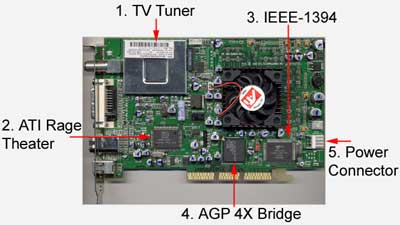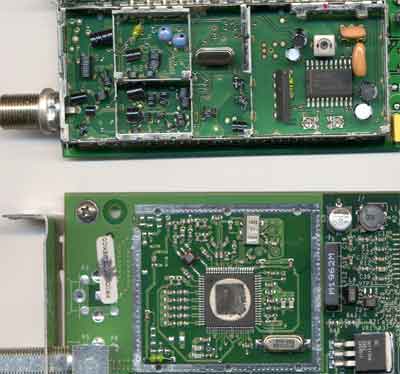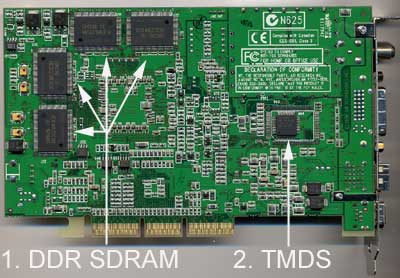ATI's Visit to AnandTech: All-in-Wonder Radeon 8500DV Preview & more
by Anand Lal Shimpi on November 6, 2001 1:55 AM EST- Posted in
- GPUs
There is no 8500DV
One thing ATI was adamant to point out was that there is no Radeon 8500DV "chip" and the chip used on the All-in-Wonder Radeon 8500DV is no different than the regular Radeon 8500 chip. Architecturally the chip used on the AIW Radeon 8500DV is identical to the Radeon 8500 R200 GPU. This does not mean that the two will run at the same clock speeds. When ATI visited us they hadn't finalized the clock speed of the AIW Radeon 8500DV and we weren't able to determine the speed of the sample they brought with them (more on that later). We'd expect the core clock speed of the AIW Radeon 8500DV to be somewhere between the 250MHz clock of the OEM Radeon 8500LE and the 275MHz clock of the retail Radeon 8500.
The AIW 8500DV card itself has a number of things that set it apart from the regular Radeon 8500. The above graphic should serve as a good starting point for us to point out the various features of the card:
1) TV Tuner – historically one of the major features of the AIW series has been the ability to watch TV on your PC. The only change the AIW Radeon 8500DV makes to the previous generation AIW Radeon is that this tuner now uses a programmable piece of silicon that handles all of the tuning functions. This not only reduces the size of the tuner section of the board but offers a number of other enhancements such as the ability to tune faster than conventional tuners. The only other card we ever saw to feature this was the 3dfx Voodoo TV which was unfortunately the last product to ever come out of 3dfx.
Conventional tuner (top) vs. silicon based tuner (bottom)2) ATI Rage Theater – the Rage Theater enables analog video capture support and this particular chip remains unchanged from the AIW Radeon that was released over a year ago.
3) Agere (Lucent) IEEE-1394 chip – this single chip IEEE-1394 solution gives the AIW Radeon 8500DV the ability to capture video directly from a digital source such as a DV camera. With DV cameras as popular as they are today, this feature makes a lot of sense for a next-generation AIW card. This is where the 'DV' suffix comes from.
4) ATI AGP 4X Bridge – this chip is necessary because of the inclusion of the IEEE-1394 controller on the AIW Radeon 8500DV card itself. This is unfortunately why we ran into problems testing the core clock speed of the card which continuously showed up as 3.58MHz. The potential for AGP controller compatibility issues to arise because of this chip is also something we'd like to point out. We weren't able to conduct compatibility testing while ATI was here however upon receiving the final card we will perform extensive compatibility testing.
5) Power connector – another newcomer to the AIW design is this power connector that is normally seen only on 3.5" floppy drives. The purpose of this power connector is to power any IEEE-1394 devices connected to the board.
One thing you'll notice is that there isn't a single DRAM chip on the front of the card. Flipping the AIW Radeon 8500DV over we reveal the following:
1) Four 4Mx32 DDR SDRAM chips – another assumption you can safely make is that the 64MB of DDR SDRAM on the AIW Radeon 8500DV board will run slower than on the retail Radeon 8500. Obviously the AIW RAdeon 8500DV isn't all about gaming performance but it would've been nice to have similar specs between the two cards.
2) TMDS transmitter – this chip drives the DVI output of the card.
And finally we have the I/O pane of the card itself with the following connectors (from left to right):
1) Coaxial cable input
2) DVI-I output
3) 28-pin proprietary connector for breakout box
4) IEEE-1394 input














0 Comments
View All Comments